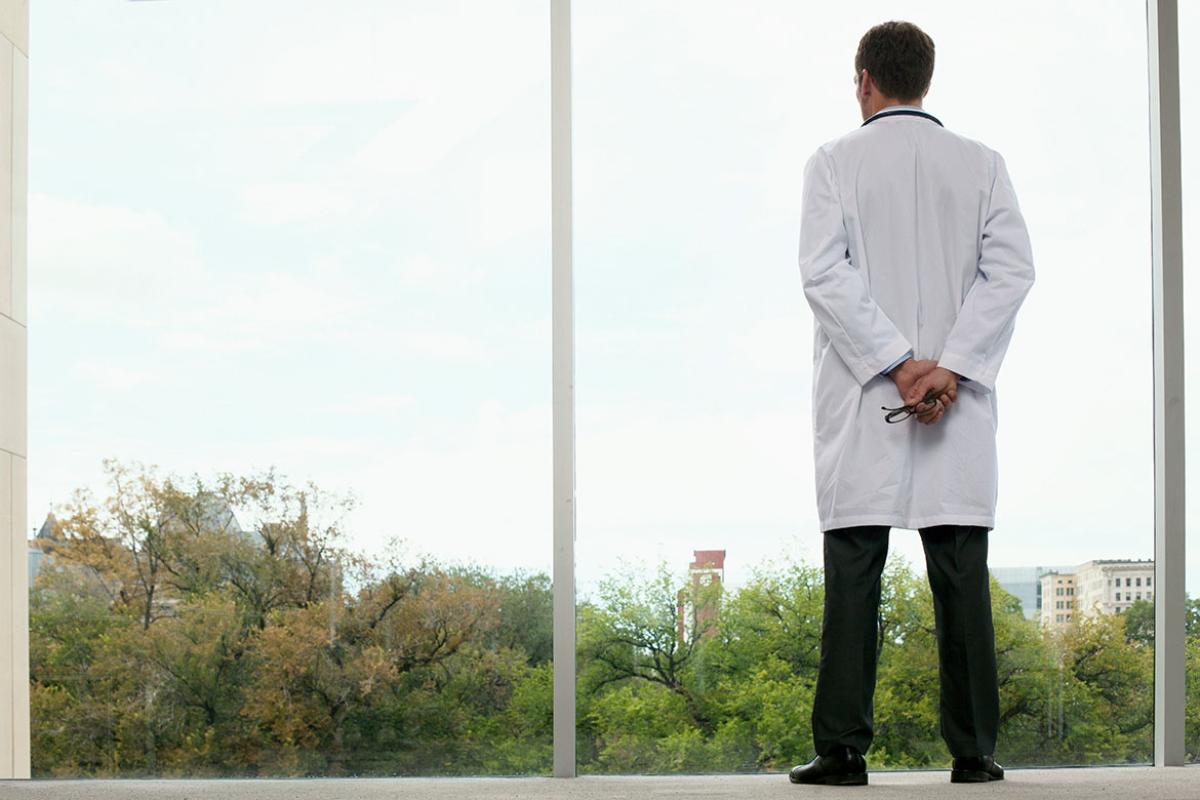The latest research confirms that physicians and health systems can make a measurable, lasting, lifesaving difference by following an evidence-based approach called the Zero Suicide model.
Of the six health centers in five states who reported data from 2012 to 2019 that was published recently in JAMA Network Open, Henry Ford Health’s systematic efforts achieved the lowest ratio of monthly suicide attempts. That figure dropped from 11.3 to 0.3 suicide attempts per 100,000 people. By contrast, annual suicide rates nationwide rose by 25% from 2000 to 2021.
The success at Henry Ford Health on this score should not come as a surprise. After all, Henry Ford Health is the birthplace of the Zero Suicide model, which the study describes as “a menu of evidence-based approaches along a care pathway starting with suicide-risk screening and assessment followed by brief interventions and treatment.”
Overall, implementation of the Zero Suicide model “was associated with a reduction in suicide attempt rates among patients accessing outpatient mental health care at most study sites,” says the study, whose lead author is Brian K. Ahmedani, PhD, MSW.
Ahmedani directs the Center for Health Policy and Health Services Research at Henry Ford Health, which is part of the AMA Health System Member Program that provides enterprise solutions to equip leadership, physicians, and care teams with resources to help drive the future of medicine.
“We continued to reduce suicide attempts and death rates after that seven-year period,” Ahmedani told the AMA. “We have about 40,000 people a year going through our behavioral health department, and well over 100,000 in behavioral health treatment, and we tracked their outcomes, even when outside of our system.”
15 minutes to stop suicide
The Zero Suicide model emerged in the early 2000s. Ahmedani recalled that a Henry Ford Health nurse noted, “If we were providing perfect care, then no one would die by suicide.”
The next step was to “put together a team of health system leaders, patients, clinicians and other stakeholders. For it to be successful, we had to work together,” Ahmedani said. That initial depression-care project evolved into a full-scale systemwide initiative. By 2010, Henry Ford had extended its suicide-prevention strategy across all areas of care, and that was the start of Zero Suicide.
“It was a team effort, rather than an individual approach, which I think was very different from the way that most health care systems were providing behavioral health care,” said Ahmedani.
The comprehensive and pragmatic Zero Suicide model begins with screenings that set patients on structured, adaptable pathways. “We’ve made it so that it can work within a typical 15-minute visit,” Ahmedani explains. “It fits the flow of real-world health care without compromising quality.”
Designed to be completed in any setting by social workers or other psychiatric nurse practitioners, those determined to be at risk for suicide see a psychiatrist for a full psychiatric evaluation, and the safety plan is completed by a social worker or a nurse-practitioner care coordinator.
“There are some people who have concurrent mental health conditions that we also need to treat, or other kinds of concerns, and if there's acute risk, we consider inpatient hospitalization,” Ahmedani added.
This evidence-based approach has been recognized with The Joint Commission’s Ernest Amory Codman Award and the American Psychiatric Association’s Gold Award.
Learn more with the AMA’s suicide-prevention guide to treat at-risk patients and explore how your primary care practice can help prevent suicide.
Coordinating care can save lives
Henry Ford Health's internal culture supports this collaborative approach.
“The whole system has been phenomenal. That’s one reason why we’ve been able to sustain this for so long. We’re driven by a focus on high-quality care, and the whole institution is really supportive of this concentration on behavioral health,” Ahmedani said, crediting robust support from top leaders at Henry Ford Health, including former behavioral health chair Cathrine Frank, MD, Doree Ann Espiritu, MD, and current behavioral health chair Deepak Prabhakar, MD.
Zero Suicide’s impact has extended far beyond Detroit. Its success has driven adoption in over 25 countries and on every continent. Meanwhile, the Michigan Mental Health Innovation Network for Clinical Design—called MI Mind for short—is a collaborative effort supported by Blue Cross Blue Shield Michigan that unites behavioral health practices in other systems under the Zero Suicide protocols.
A hallmark of the Zero Suicide model “is its adaptability,” Ahmedani said. “Clear and structured pathways can be created based on the staffing and resources available within different health systems. ... Everybody knows what they’re supposed to do and when they’re supposed to do it. It’s straightforward, simple and it works within the parameters of existing healthcare processes and procedures.”
The model has also been incorporated into partnerships with criminal justice and school systems to identify people at risk of suicide and, when necessary, intervene. Up to 21% of those who die by suicide have had interactions with the legal system in the previous year, Ahmedani noted, so he and his team are developing outreach programs for troubled students and people just released from jail.
The study provides further compelling evidence that the Zero Suicide model works. Ahmedani and his physician and health-professional colleagues at Henry Ford Health are continuing to push the boundaries of what is possible.
“We had zero suicides across our entire system for 18 straight months—six full quarters,” he noted. “People are struggling all across America, and now we have an option that’s feasible, practical and with plenty of data to show that it works. So, we are working every day to refine this model, bring it to more places, and save even more lives.”
The AMA has policy addressing the nation’s mental health crisis and has described child, youth and young adult suicide in the U.S. as a serious health concern.



